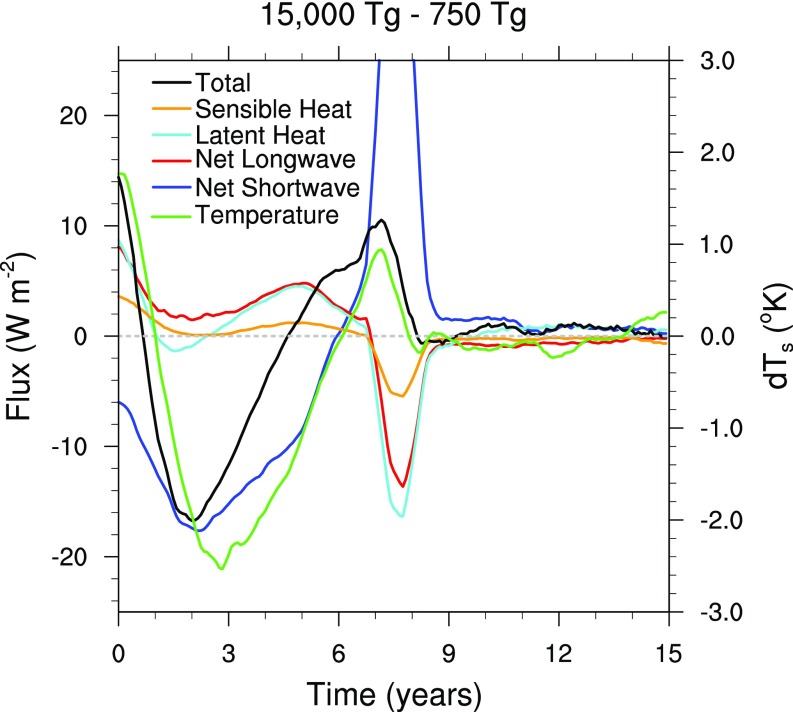Fig. S5.
Differences in globally averaged net surface fluxes (left ordinate) and temperature (green curve, right ordinate) between the simulations with 15,000 Tg and 750 Tg of soot. The data have been smoothed with a 1-y running average. The shortwave flux (blue curve) is as much as 18 W⋅m−2 smaller for 15,000 Tg than for 750 Tg at the end of year 2 after impact. However, the effect on the global mean temperature is mitigated by the behavior of the longwave, sensible, and latent heat fluxes, whose magnitude is reduced more in the 15,000-Tg simulation than in the 750-Tg simulation, such that their difference across the two simulations is positive. The net result is that, after 2 y, the global mean temperature is only about 2 °C colder in the 15,000-Tg simulation than in the 750-Tg simulation. Note also that, during the first year, and again after 5 y, the temperature in the 15,000-Tg simulation is actually warmer than in the 750-Tg simulation. Warming in the first year is due to the effect of changes in longwave, sensible, and latent heat fluxes; after 5 y, the shortwave flux is larger in the 15,000-Tg simulation because the soot is removed more quickly in that case.

